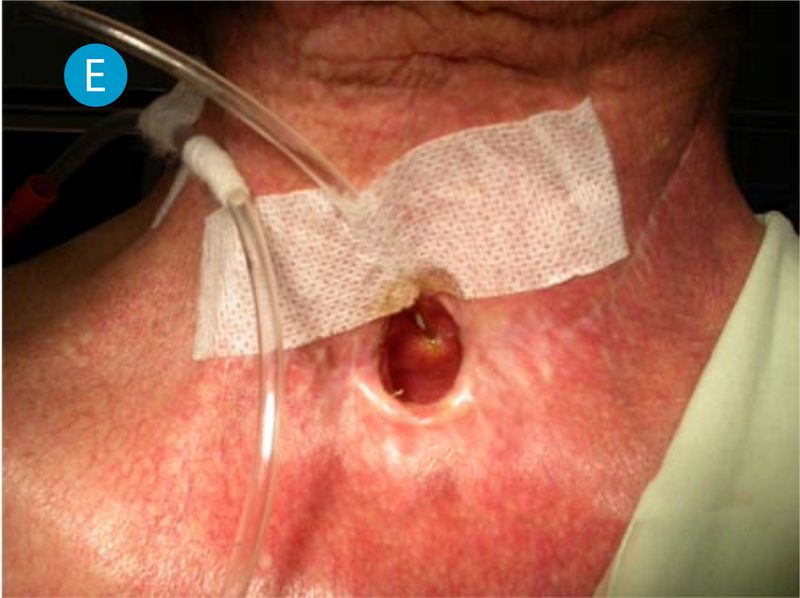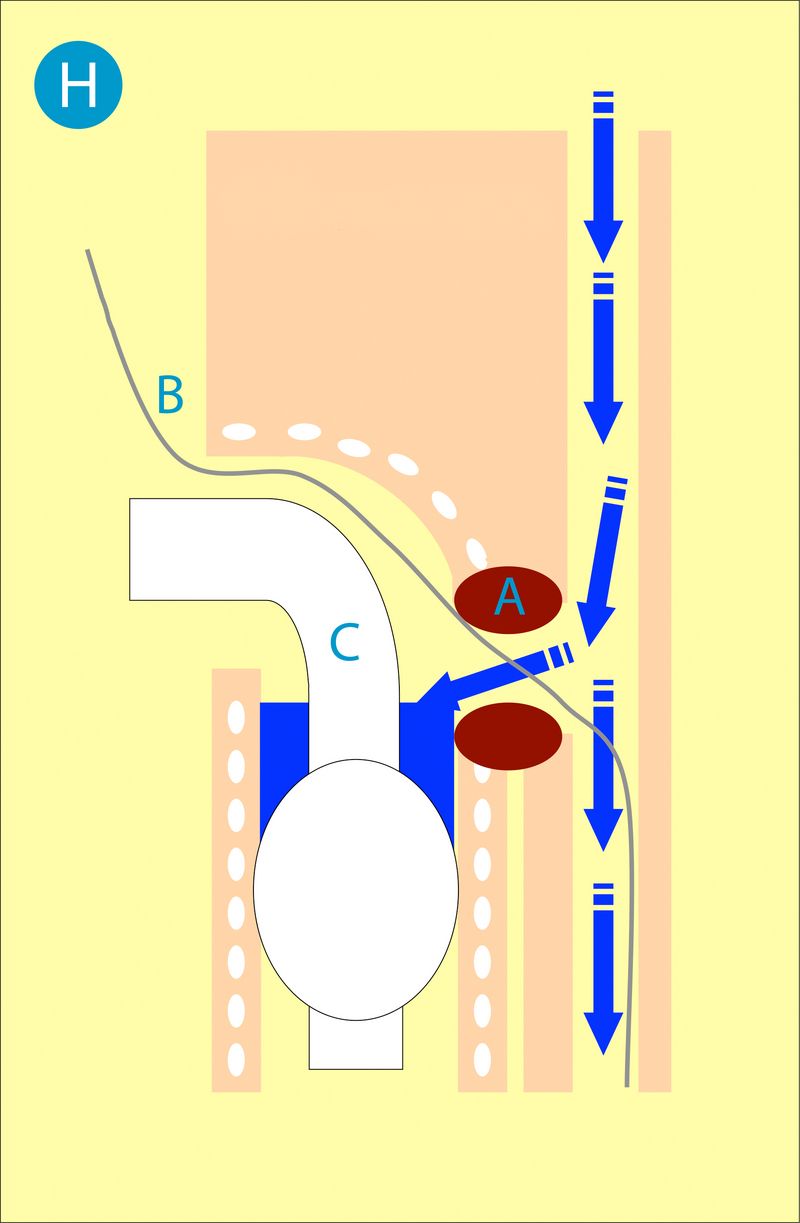
Spacer treatment
Spacer treatment refers to the removal of the voice prosthesis from the inadequate shunt and the insertion of a spacer, usually a small lumen stomach tube, to prevent the shunt from closing over. The insertion of a spacer is the only treatment option in serious cases of an infected necrotic shunt where the insertion of a custom-fit prosthesis is not possible. Once the voice prosthesis has been removed and the infection treated, the shunt will heal and stabilize. The shunt slowly shrinks, and finally a new voice prosthesis can be inserted. The stabilization and shrinking process can take days to weeks. The patient will not be able to talk during this time. Usually a blocked tracheostomy tube will have to be inserted. The patient will be fed through a stomach tube and may be obliged to remain in hospital for treatment. This is expensive, and is not pleasant for the patient. Treating dilated atrophic shunts with spacers is not particularly promising, since the spontaneous shrinkage is minor and dilation quickly recurs after a new voice prosthesis is inserted.

